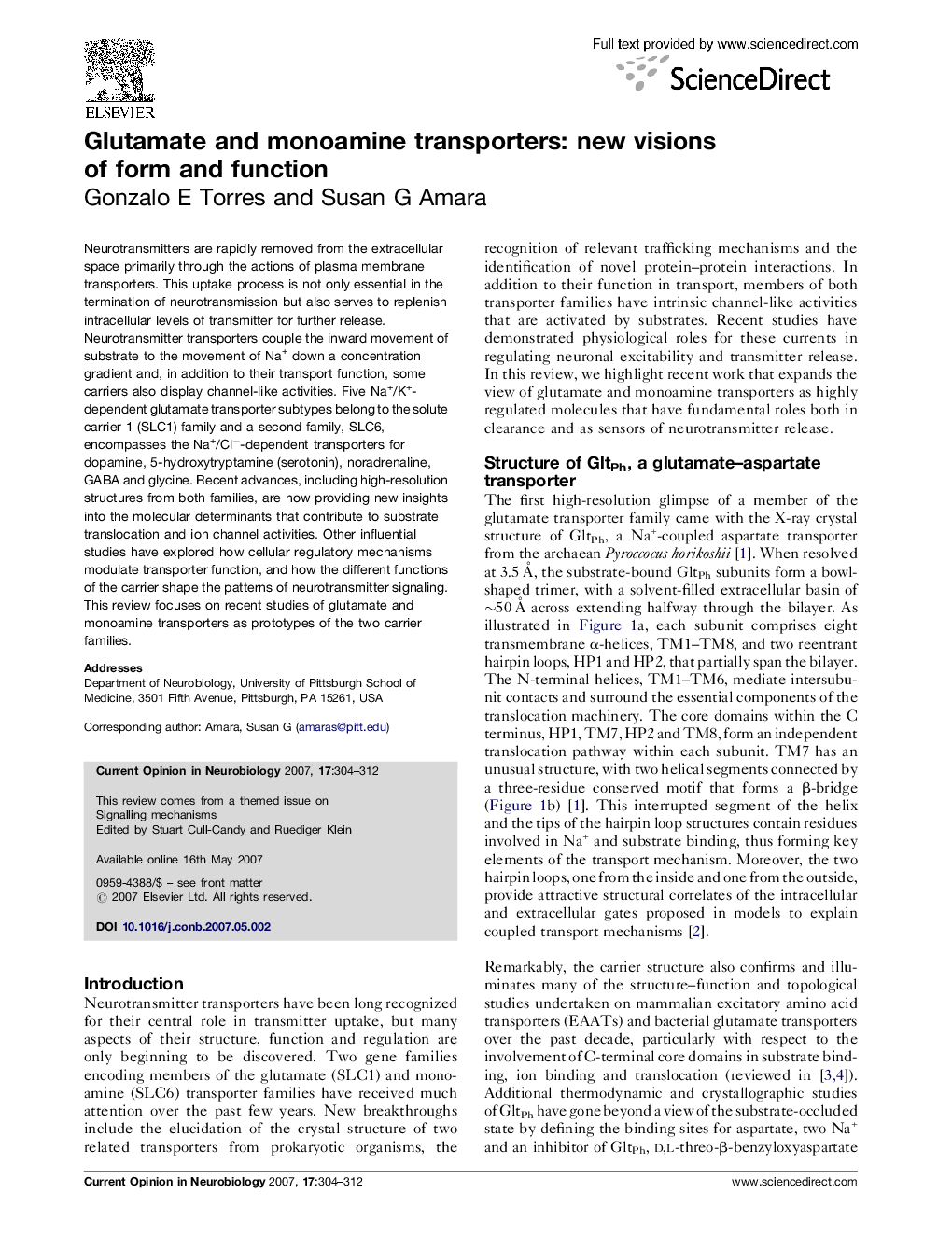| Article ID | Journal | Published Year | Pages | File Type |
|---|---|---|---|---|
| 4334656 | Current Opinion in Neurobiology | 2007 | 9 Pages |
Neurotransmitters are rapidly removed from the extracellular space primarily through the actions of plasma membrane transporters. This uptake process is not only essential in the termination of neurotransmission but also serves to replenish intracellular levels of transmitter for further release. Neurotransmitter transporters couple the inward movement of substrate to the movement of Na+ down a concentration gradient and, in addition to their transport function, some carriers also display channel-like activities. Five Na+/K+-dependent glutamate transporter subtypes belong to the solute carrier 1 (SLC1) family and a second family, SLC6, encompasses the Na+/Cl−-dependent transporters for dopamine, 5-hydroxytryptamine (serotonin), noradrenaline, GABA and glycine. Recent advances, including high-resolution structures from both families, are now providing new insights into the molecular determinants that contribute to substrate translocation and ion channel activities. Other influential studies have explored how cellular regulatory mechanisms modulate transporter function, and how the different functions of the carrier shape the patterns of neurotransmitter signaling. This review focuses on recent studies of glutamate and monoamine transporters as prototypes of the two carrier families.
